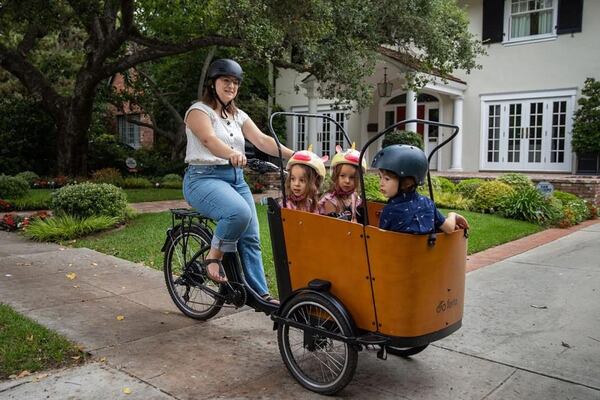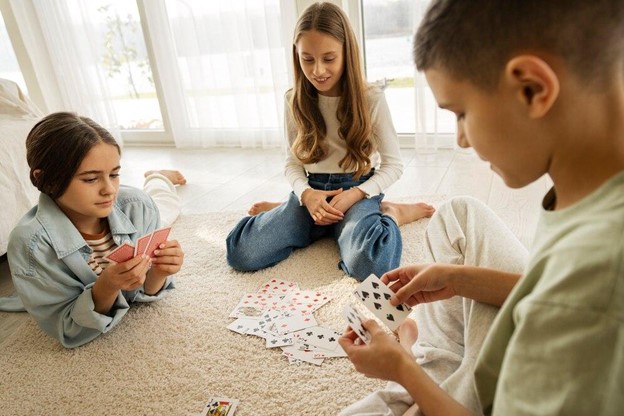From School Runs to Adventures: The Versatility and Practicality of Cargo Bikes Designed for Kids
For most parents, shuttling children from one place to another is an everyday affair. Parents transport kids to school, activities, errands, and back from morning to evening. That’s why a family cargo bike deisgned for kids has become a favorite alternative transport option for parents on the go.
If you’ve never seen a cargo bike or considered one for your family, you may not know how amazing these bicycles can be. The latest versions of electric cargo bikes are far more practical than traditional bicycles. The heavy load capacity offers families a multi-purpose, practical way to transport multiple kids and all their stuff just about anywhere they need to go.
In this article, we explore the benefits, designs, functionality, how to utilize cargo bikes for daily tasks, and tips and tricks for using cargo bikes for kids.
Benefits of Cargo Bikes for Kids
- Environmental Benefits: A family cargo bike is incredible for adventures and creating memories and serves as an excellent tool to teach children about the importance of environmental protection. Since cargo bikes are powered with a battery-powered rechargeable electricmotor and are powered by pedaling, making them an environmentally friendly method of travel. Families will also save time and money by skipping fossil fuels and avoiding overcrowded traffic lanes.
- Physical & Psychological Benefits: One of the most dangerous health trends for children comes from inactivity. Health professionals have stated that prolonged sitting has adverse health effects on our bodies, similar to those caused by smoking cigarettes. Adding a family cargo bike will excite kids about getting outside and being physically active.
- Relationship Building: When using cargo bikes for kids, every trip to the store or school is an adventure filled with exploration, conversation, and learning experiences. Sharing these journeys together helps to create relationship-building family memories and strong relationships that will continue long after a kid grows up and has a bike of their own.
Design And Functionality of Cargo Bikes
- Cargo Bike Designs and Types: Using a family cargo bike for transporting kids is available in a variety of designs and bicycle types. Some of the most popular cargo bike designs for children are long-tail cargo bikes, cargo tricycles, mid-tail cargo bikes, box bikes, and box tricycles. When searching for a cargo bike for sale, it is essential to remember that most designs also come with an option to add a battery-powered electric motor to assist with long trips and varying terrain types.
- Additional Features of Cargo Bikes: Cargo bikes for kids also include many additional features, such as extra comfy seats, seat belts, seat safety attachments, protective roofs, sun and rain canopies, table attachments, and more. These features allow children to stay safe and comfortable no matter how long the adventure lasts.

Utilizing Cargo Bikes for Everyday Tasks
- Transporting Children to School: With a family cargo bike, it is easy for parents to cycle children to and from school without the need for a second car or vehicle. Biking to school with a child gives parents more unique opportunities for conversations, learning experiences, and exploring the world around them together.
- Fun Cycling Activities with Kids: When cycling on a cargo bike with a child, there are an unlimited number of fun travel activities that parents can utilize. Families can play fun games during the journey, like looking for specific things in nature like “I Spy.” Parents can also teach kids about local landmarks, flora, fauna, and animals throughout the ride.
- Other fun activities to try are geocaching, Pokémon Go, exploring new playgrounds or parks, stopping for a picnic, or imagining what objects the clouds resemble. There are no limits on how many fun games families can share. Another benefit of cargo biking is discovering the growing community of biking families through social media or groups. Families will enjoy taking children on group rides, meeting like-minded people of all ages, and making new friends when they become participating members of local cargo bike groups.
Tips and Tricks for Using Cargo Bikes
- Safety Tips for Cargo Biking with Children: Keeping kids safe should be a top priority no matter what method of travel, and that is no different with cargo bikes for kids. Most cargo bike models have various safety features like child safety seats, three-point harness system seatbelts, roll cages, running boards, and strong cargo boxes. Riders should also stick to the designated bike route or trails when available for the ride and use additional biking safety gear for kids such as blinking safety lights, helmets, pads, and mirrors to ensure the safety of all the precious cargo aboard.
- Choosing the Right Bike Model: Choosing the right family cargo bike means exploring the features and models that best fit the group’s lifestyle. Variables such as how many children are in the family, how old a kid is, where they will ride the bike, how much cargo it needs to hold, and how far they plan to ride will all play a role in finding the perfect cargo bike for sale.
Conclusion
There’s a good reason why cargo bikes for kids and families have grown in popularity worldwide. With the many advantages and versatility of using an electric cargo bike, families can travel more, save money, improve overall health, reduce carbon footprints, increase quality time with children, and allow them to explore the world around them like never before. Add a family cargo bike to your home today to create new family pastimes that will positively impact a child for generations.
Read how to prepare your kids for their first day back to school.












